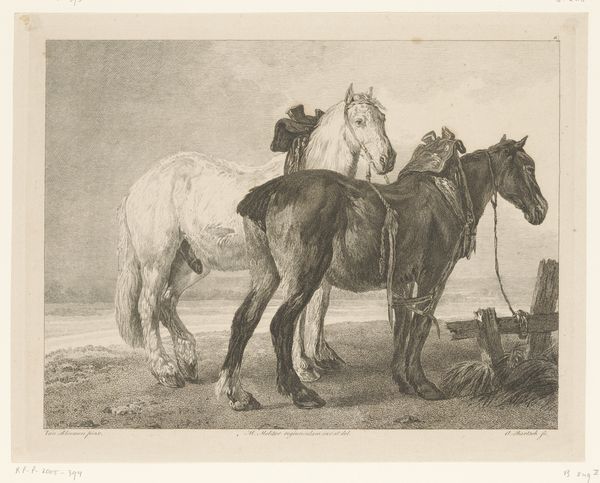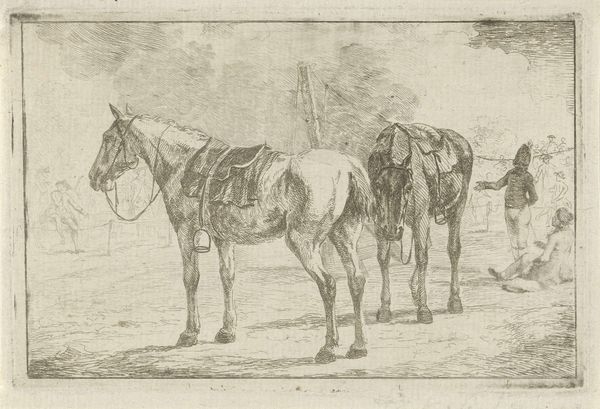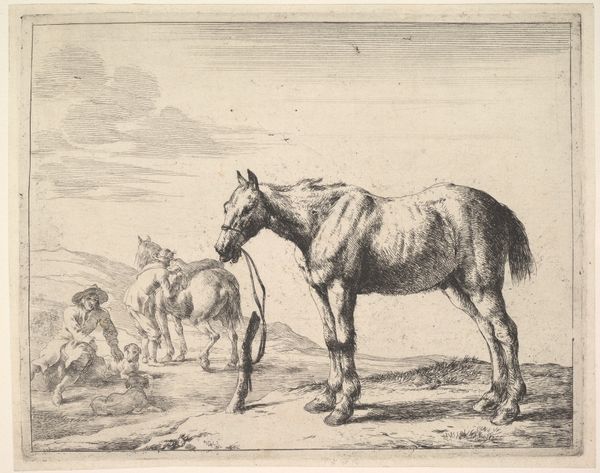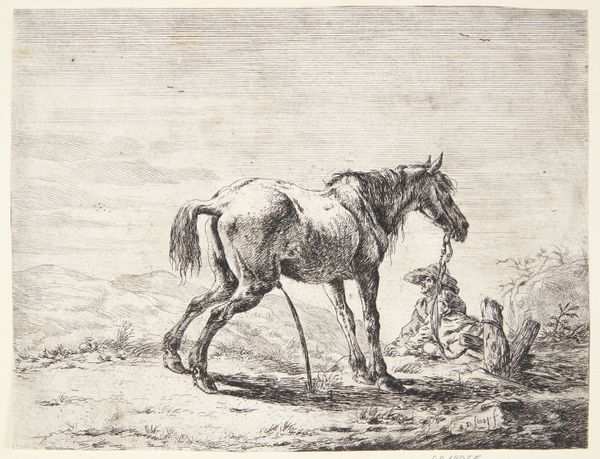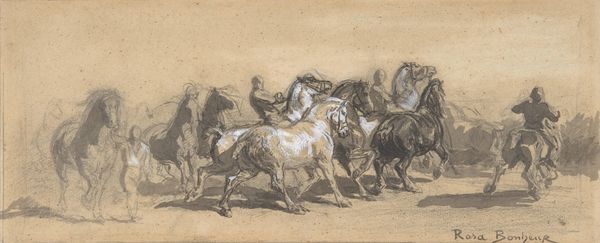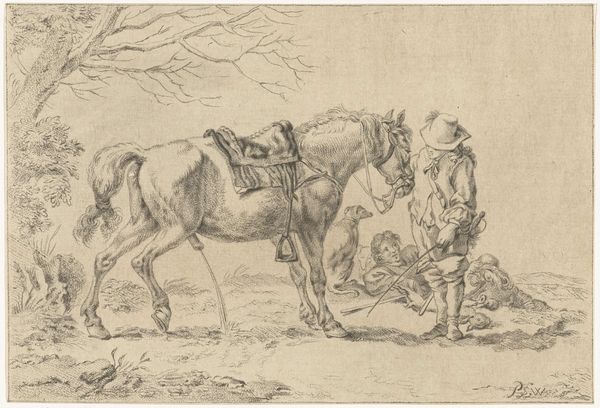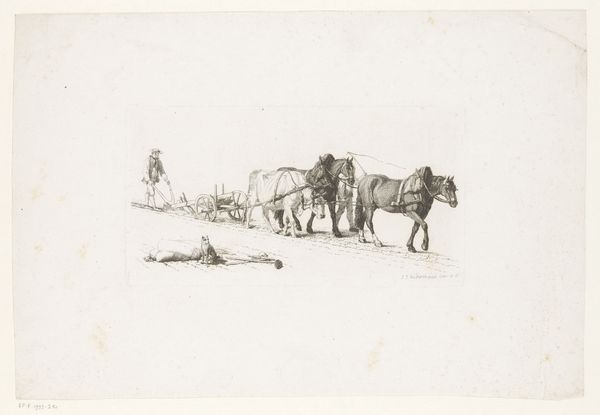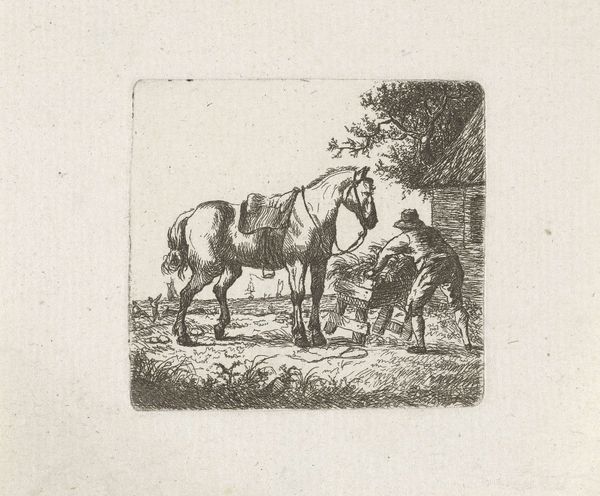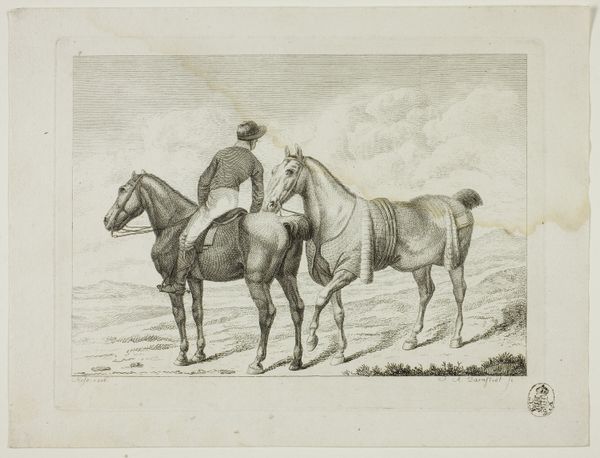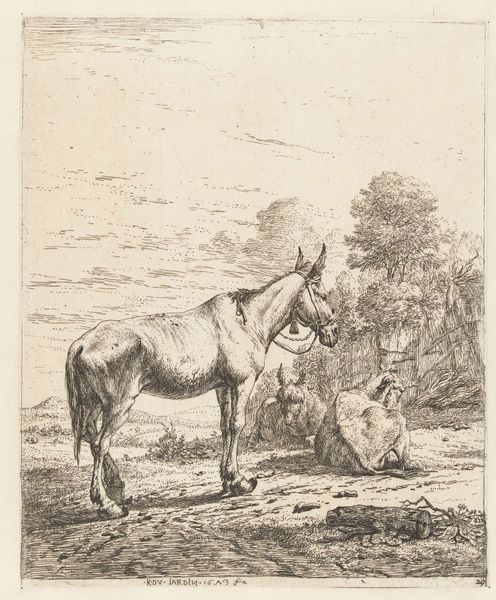
drawing, lithograph, print, paper
#
portrait
#
drawing
#
lithograph
# print
#
paper
#
genre-painting
Dimensions: 110 × 196 mm (image); 162 × 218 mm (sheet)
Copyright: Public Domain
Editor: So, here we have Théodore Géricault's lithograph, "Horses Being Led to the Skinner," made in 1823. It’s a stark image, somber even. I'm struck by the vulnerable posture of the horses and, of course, the implied narrative. What's your take on it? What stands out to you? Curator: It’s funny, isn’t it, how a simple sketch can hold such a heavy feeling. What I find so powerful here is Géricault’s choice to focus on these beasts' final walk, almost a premonition rendered in lithographic stone. Makes you think about mortality, doesn't it? These animals, full of life, reduced to this… leading them to meet the "skinners" which translates to 'tanners.' I imagine Géricault observed scenes from daily life. Do you feel any empathy looking at the horse figures? Editor: Absolutely. The drawing itself has such a raw, almost hurried quality to it, emphasizing their imminent demise. There's nothing romanticized about this; it's just a depiction of labor. Does it tie into the wider social issues? Curator: In its matter-of-factness, it exposes the rough side of daily life, of the role of animals in society – something not often depicted in the Romantic era's art, which often celebrated the sublime. These horses, no longer useful, were discarded. The print whispers rather than shouts about societal injustices – an early instance of what art could express to provoke public consciousness. Does knowing this perspective change anything for you? Editor: Definitely. The piece moves from a somber image to one of implicit social critique. Géricault isn't just showing us horses; he's reflecting the lives of the marginalized through them. Thanks, I'll think twice about overlooking seemingly simple pieces! Curator: That’s the beauty of art, isn't it? Always a new layer to uncover. And remember, the simplest line can tell the biggest story.
Comments
No comments
Be the first to comment and join the conversation on the ultimate creative platform.
